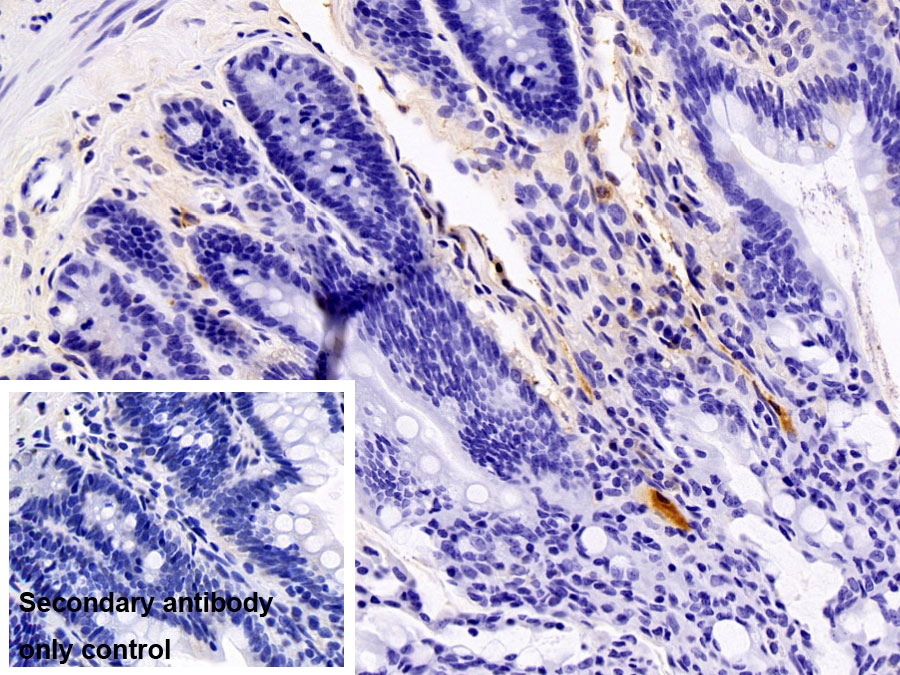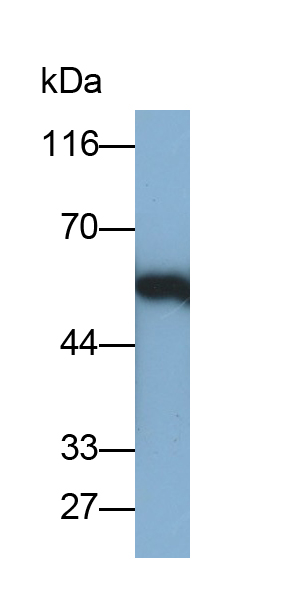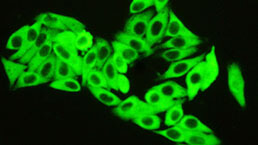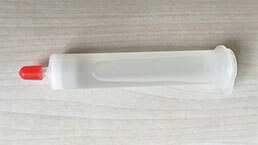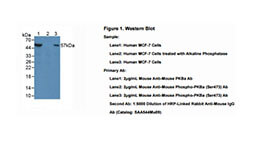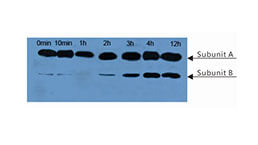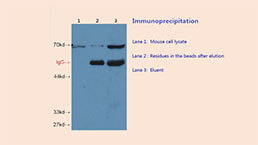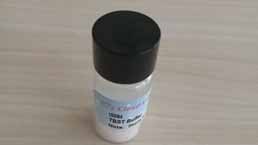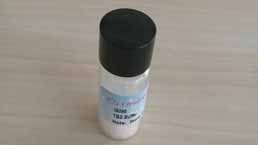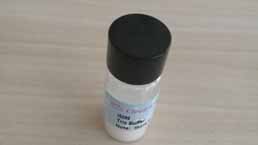Polyclonal Antibody to Secretory Immunoglobulin A (sIgA) 

S-IgA
Overview
Properties
- Product No.PAA641Mu01
- Organism SpeciesMus musculus (Mouse) Same name, Different species.
- ApplicationsWB; IHC
If the antibody is used in flow cytometry, please check FCM antibodies.
Research use only - DownloadInstruction Manual
- CategoryInfection immunityImmune moleculeReproductive scienceGenetic scienceDermatologyImmunodeficiency
- SourcePolyclonal antibody preparation, Host Rabbit
- Ig Type IgG, Potency n/a
- PurificationAntigen-specific affinity chromatography followed by Protein A affinity chromatography
- LabelNone
- Immunogen n/a
- Buffer Formulation0.01M PBS, pH7.4, containing 0.05% Proclin-300, 50% glycerol.
- TraitsLiquid, Concentration 0.5mg/mL
Sign into your account
Share a new citation as an author
Upload your experimental result
Review

Contact us
Please fill in the blank.
Specifity
The antibody is a rabbit polyclonal antibody raised against sIgA. It has been selected for its ability to recognize sIgA in immunohistochemical staining and western blotting.
Usage
Western blotting: 0.01-2µg/mL;
Immunohistochemistry: 5-20µg/mL;
Optimal working dilutions must be determined by end user.
Storage
Store at 4°C for frequent use. Stored at -20°C in a manual defrost freezer for two year without detectable loss of activity. Avoid repeated freeze-thaw cycles.
Stability
The thermal stability is described by the loss rate. The loss rate was determined by accelerated thermal degradation test, that is, incubate the protein at 37°C for 48h, and no obvious degradation and precipitation were observed. The loss rate is less than 5% within the expiration date under appropriate storage condition.
Organism Species More: Rattus norvegicus (Rat)Giveaways
Increment services
Citations
- Evaluation of the immune benefits of two probiotic strains Bifidobacterium animalis ssp. lactis, BB-12® and Lactobacillus paracasei ssp. paracasei, L. casei 431® in an influenza vaccination model: a randomised, double-blind, placebo-controlled study.Solgar: source
- RESPON IMUN MUKOSA DAN SELULER PADA TIKUS YANG DIBERI BUBUK SUSU KAMBING DENGAN INFEKSI Salmonella Typhimurium [Mucosal and Cellular Immune Response of Rat Given Goat Milk Powder and Infected with Salmonella Typhimurium]Ipb: Source
- Effects of Clostridium butyricum on growth performance, immune function, and cecal microflora in broiler chickens challenged with Escherichia coli K88Pubmed: 24570422
- Potency of Lactobacillus plantarum Dad-13 and Sweet Potato (Ipomoea batatas) Fiber as Immunomodulator in Rats Infected With Salmonella TyphimuriumCcsenet:Source
- Repeated Oronasal Exposure to Lipopolysaccharide Induced Mucosal IgA Responses in Periparturient Dairy CowsPubmed:25061754
- Dietary Apostichopus japonicus enhances the respiratory and intestinal mucosal immunity in immunosuppressive micePubmed:25186733
- Dietary squid ink polysaccharide could enhance SIgA secretion in chemotherapeutic micePubmed:25308407
- Fecal microbiota transplantation and bacterial consortium transplantation have comparable effects on the re-establishment of mucosal barrier function in mice with intestinal dysbiosisPubMed: 26217323
- Role of Maternal Allergy on Immune Markers in Colostrum and Secretory Immunoglobulin A in Stools of Breastfed InfantsPubMed: 26243755
- Oropharyngeal Colostrum Administration in Extremely Premature Infants: An RCTPubMed: 25624376
- Salivary Secretory Immunoglobulin (SIgA) and Lysozyme in Malignant Tumor Patientsjournals:8701423
- 益生菌抵御大鼠急性腹泻的效果及其对肠道黏膜屏障的影响article:12422
- Long-term use of ceftriaxone sodium induced changes in gut microbiota and immune system.pubmed:28220870
- Imbalance of intestinal immune function in piglets infected by porcine circovirus type 2 during the fetal period.pubmed:28244338
- Immunomodulatory effects of Hericium erinaceus derived polysaccharides are mediated by intestinal immunologypubmed:28266682
- Saccharomyces boulardiiadministration can inhibit the formation of gastric lymphoid follicles induced by Helicobacter suis infectionpubmed:28115360
- Effects of dietary threonine supplementation on intestinal barrier function and gut microbiota of laying henspubmed:28938780
- Novel dietary polysaccharide SIP promotes intestinal secretory immunoglobulin A secretion in mice under chemotherapy10.1016/j.jff.2017.08.012
- Evaluation of Susceptibility and Innate Immune Response to Candida albicans in Mice with Sub-healthijp.2018.689.697
- Correlation of s-IgA and IL-6 Salivary with Caries Disease and Oral Hygiene Parameters in ChildrenPubmed: 31892186
- Fluorescence polarization-based rapid detection system for salivary biomarkers using modified DNA aptamers containing base-appended basesPubmed: 31855403
- Artesunate protects immunosuppression mice induced by glucocorticoids via enhancing pro-inflammatory cytokines release and bacterial clearancePubmed: 33045197
- Effects of different doses lipopolysaccharides on the mucosal barrier in mouse intestinePubmed: 32947071
- Yacón (Smallanthus sonchifolius) prevented inflammation, oxidative stress, and intestinal alterations in an animal model of colorectal carcinogenesisPubmed: 32567144
- Construction and Immunogenicity Comparison of Three Virus-Like Particles Carrying Different Combinations of Structural Proteins of Avian Coronavirus Infectious?¡33670249
- Ingestion of High ¦Â-Glucan Barley Flour Enhances the Intestinal Immune System of Diet-Induced Obese Mice by Prebiotic Effects33799564
- Assessment of salivary stress and pain biomarkers and their relation to self-reported pain intensity during orthodontic tooth movement: a longitudinal and prospective …34170330
- Microarray Analysis of Paramylon, Isolated from Euglena Gracilis EOD-1, and Its Effects on Lipid Metabolism in the Ileum and Liver in Diet-Induced Obese Mice34684408
- Saliva testing as noninvasive way for monitoring exercise-dependent response in teenage elite water polo players: A cohort study34797320
- Fermented Corn–Soybean Meal Mixed Feed Modulates Intestinal Morphology, Barrier Functions and Cecal Microbiota in Laying Hens34827791
- Three Urban of China: A Cohort Study of Maternal-Infant Factors and HM Protein ComponentsPubmed:35438093





